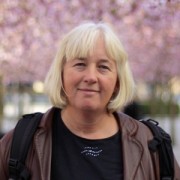As an MD and psychiatrist my work has focused on mental health care for minorities, migrants and refugees in Stockholm, Sweden for most of my professional career. I received my medical training at Karolinska Institutet (KI). After attaining specialist competency in psychiatry (1991), and basic psychotherapeutic training, I started to work as a consultant psychiatrist in a multicultural and poor area. There I experienced that my theoretical psychiatric knowledge, diagnostic tools, and treatment models were sometimes inadequate in explaining reality or helping patients.
These clinical experiences evoked my interest in the role of culture in psychiatric care. At this time there was little interest in cultural psychiatry in Sweden. To learn more I attended the McGill summer school in Montreal. This was my gateway to the academic field of cultural psychiatry. In Sweden, with the aim of introducing cultural psychiatry and improving care I started a one week advanced course in transcultural psychiatry. This course is still running and for the first 10 years Laurence Kirmayer lectured and on one occasion Cecile Rousseau from McGill.
In 1999, Stockholm County Council (SLL) started a Transcultural Centre (TC). I have worked there since the start and have been Director since 2002. TC started as a knowledge centre in transcultural psychiatry. The idea was that patients, regardless of cultural and ethnical background, had the right to good service in the whole mental health care system. Over the years TC’s remit has expanded. Today it includes: transcultural psychiatry; somatic care for asylum seekers and refugees; child and dental care for asylum seekers and undocumented migrants; and health information for refugees and minorities. In 2009 Stockholm County Council started providing health information for newly-arrived refugees and minorities in their native language. This is undertaken by what we call “health communicators”. They function as a form of cultural brokers. The refugees and immigrants learn about healthy living in a new context and about how the Swedish health care system works. To health professionals they convey knowledge about the context of the refugees and immigrants, situations in the land of origin, routes to Sweden, but also about thoughts, worries and questions among refugees and immigrants about health and health care in Sweden.
Parallel with clinical work I have been involved in research at Karolinska Insititutet. I am affiliated to the Department of Clinical Neuroscience, KI. My PhD was completed in 2003. The research was on illness meaning among Turkish- and Swedish-born women assessed as somatising, and their interaction with care. My supervisor was Professor Solvig Ekblad. In 2006-9 I had a post doc at KI. My supervisor was Professor Bo Runeson. The research was on dysthymia, panic disorders and the Cultural Formulation.
Working at the Transcultural Centre in Stockholm involves a great deal of contact with various groups of professionals within the health care system; something I enjoy. It gives an opportunity to take part in the professional’s experiences and challenges in relation to care in multicultural environments. At the Centre we place an emphasis on implementing the new Cultural Formulation interview in DSM-5 as this is a very concrete practical tool to support increased cultural awareness in assessment and to improve cultural sensitivity in treatment.
My interest in cultural aspects of the clinical encounter has a link to my own personal background. I grew up in a family with different social and cultural traditions, but not in the form of different languages or different ethnicity. We were all Swedish, we all spoke Swedish and we all celebrated Christmas. The differences were related to social class and belonging. My mother came from the countryside and a religious family of farm workers. My father comes from a non-religious family of the Swedish nobility. In these families’ cultural traditions, living, being and interacting were in many ways very different. With my father always telling me historical narratives I grew up in an imaginary world. The past was alive and parallel with the present. The boundaries between the existing and nonexistent were porous and daydreaming was normality. This has influenced my interested in narratives.
My private adult life has focused on my family and three, now grown-up, children.

